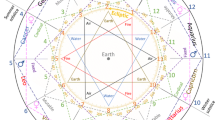Abstract
Ontological understanding of biological units (i.e. what kinds of things are they) is crucial to their use in experimental design, analysis, and interpretation. Conceptualizing fundamental units in biology as individuals or classes is important for subsequent development of discovery operations. While the criteria for diagnosing individuals are acknowledged, temporal boundedness is often misinterpreted and temporal minima are applied to units in question. This results in misdiagnosis or abandonment of ontological interpretation altogether. Biological units such as areas of endemism in biogeography and species in evolutionary biology fall victim to such problems. Our goal here is to address the misconception that biological individuals such as species and areas of endemism have a temporal minimum. Areas of endemism can persist within small temporal boundaries in the context of metapopulation dynamics, island biogeography, and range expansion and contraction. Similarly, lineage reticulation illustrates examples of short-lived species. Here, examples of known entities are provided to illustrate their persistence on short time scales in attempt to rescue future interpretation of biological units from ontological misdiagnosis, elucidate the philosophical individuality of areas of endemism and species with short lifespans, and provide justification for the “snapshot in time” diagnostic approach.


Similar content being viewed by others
References
Baum DA (1998) Individuality and the existence of species through time. Syst Biol 47:641–653
Brochu CA (1999) Phylogenetics, taxonomy, and historical biogeography of Alligatoroidea. Soc Vertebr Paleontol Memoir 6:9–100
Crother BI, Murray C (2011) Ontology of areas of endemism. J Biogeogr 38:1009–1015
de Queiroz K (1999) The general lineage concept of species and the defining properties of the species category. In: Wilson RA (ed) Species: new interdisciplinary essays. MIT Press, Cambridge, MA, pp 49–89
de Queiroz K (2005) A unified concept of species and its consequences for the future of taxonomy. Proc Calif Acad Sci 56:196–215
Eldredge N, Thompson J, Brakefield P, Gavrilets S, Jablonski D, Jackson J, Lenski R, Lieberman BS, McPeek M, Miller W III (2005) The dynamics of evolutionary stasis. Paleobiology 31:133–145
Frost DR, Kluge AG (1994) A consideration of epistemology in systematic biology, with special reference to species. Cladistics 10:259–294
Ghiselin MT (1974) A radical solution to the species problem. Syst Zool 23:536–544
Ghiselin MT (1980) Biogeographical units: more on radical solutions. Syst Zool 29:80–85
Ghiselin MT (1981) Categories, life, and thinking. Behav Brain Sci 4:269–313
Ghiselin MT (1987) Species concepts, individuality, and objectivity. Biol Philos 2:127–143
Gotelli NJ (1995) A primer of ecology. Sinauer Associates, Sunderland, MA
Hausdorf B (2002) Units in biogeography. Syst Biol 51:648–652
Hennig W (1966) Phylogenetic systematics. University of Illinois Press, Champaign, IL
Hull DL (1988) Science as a process: an evolutionary account of the social and conceptual development of science. University of Chicago Press, Chicago, IL
Lidén M (1990) Replicators, hierarchy, and the species problem. Cladistics 6:183–186
Lieberman BS (2000) Paleobiogeography: using fossils to study global change, plate tectonics, and evolution. Plenum Press/Kluwer Academic Publishers, New York
MacArthur RH, Wilson EO (1967) The theory of island biogeography. Princeton University Press, Princeton, NJ
Mayden RL (2002) On biological species, species concepts, and individuation in the natural world. Fish Fish 3:171–196
Meiri S, Mace GM (2007) New taxonomy and the origin of species. PLoS Biol 5(7):e194. doi:10.1371/journal.pbio.0050194
Michaux B (2010) Biogeology of Wallacea: geotectonic models, areas of endemism, and natural biogeographical units. Biol J Linn Soc 101:193–212
Morrone JJ (2014) Parsimony analysis of endemicity (PAE) revisited. J Biogeogr 41:842–854
Platnick NI (1991) On areas of endemism. Aust Syst Bot 4:11–12
Pulliam HR (1988) Sources, sinks, and population regulation. Am Nat 132:652–661
Quadt A (2006) Top quark physics at hadron colliders. Eur Phys J C 48:835–1000
Strawson F (1959) Individuals: an essay on descriptive metaphysics. Methuen, London
Valdesalici S, Cellerino A (2003) Extremely short lifespan in the annual fish Nothobranchius furzeri. Proc R Soc Lond [Biol] 270(Suppl ):S189–S191
Van Devender TR, Lowe CH, MacCrystal HK, Lawler HE (1992) Viewpoint: reconsider suggested systematic arrangements for some North American amphibians and reptiles. Herpetol Rev 23:10–14
Wiley EO (1978) The evolutionary species concept reconsidered. Syst Zool 27:17–26
Wiley EO, Lieberman BS (2011) Phylogenetics, 2nd edn. Wiley, New York
Acknowledgments
We thank Mary White, Craig Guyer, Jeff Goessling, and Mallory Eckstut for thoughtful comments, questions, editing, and suggestions.
Author information
Authors and Affiliations
Corresponding author
Rights and permissions
About this article
Cite this article
Murray, C.M., Crother, B.I. Entities on a Temporal Scale. Acta Biotheor 64, 1–10 (2016). https://doi.org/10.1007/s10441-015-9269-5
Received:
Accepted:
Published:
Issue Date:
DOI: https://doi.org/10.1007/s10441-015-9269-5



